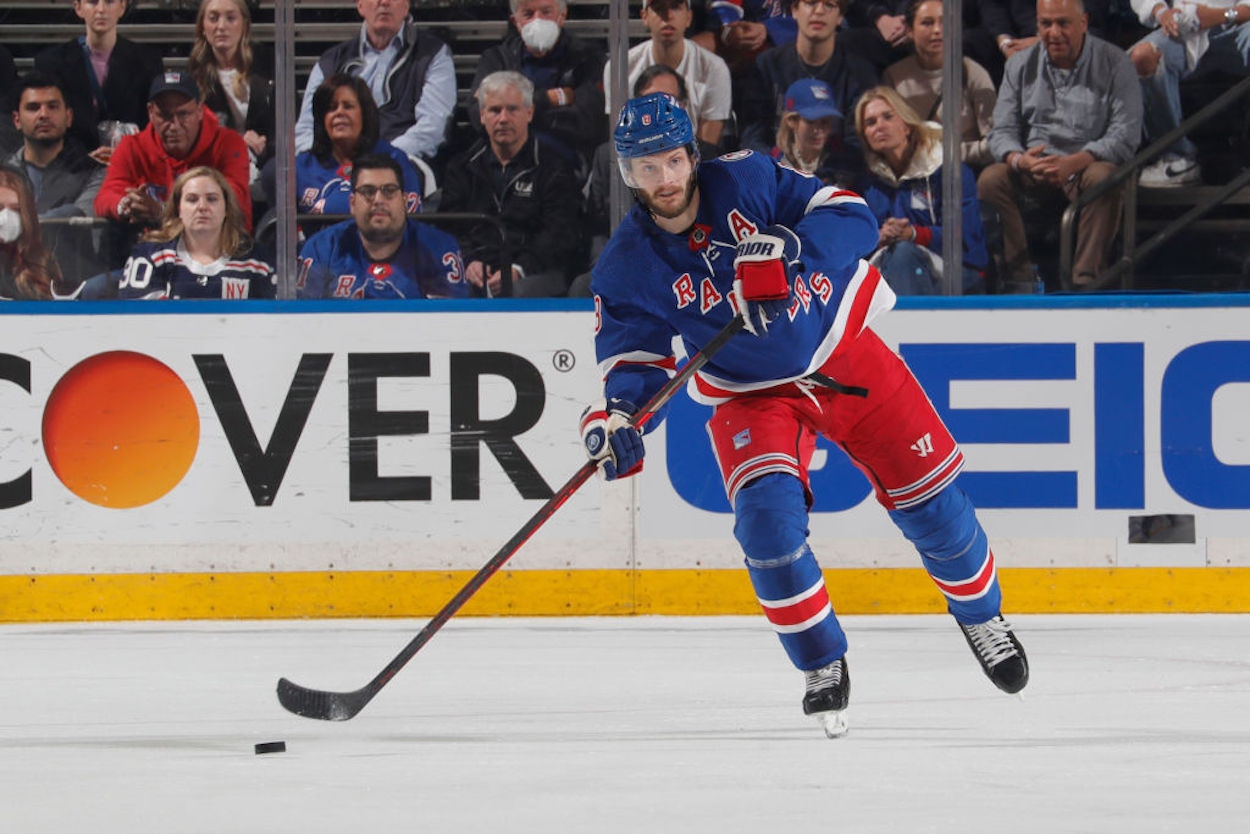NHL
NHL Playoffs: ESPN Missed a Perfect Chance to Chip Away at Hockey Culture After Jacob Trouba’s Hit on Seth Jarvis


While Memorial Day doesn’t exactly seem like hockey season, the New York Rangers stole the show on Monday night. The Blueshirts traveled south for a Game 7 and dispatched the Carolina Hurricanes without breaking much of a sweat. Goaltender Igor Shesterkin stole the show once again, bringing his club within eight wins of the Stanley Cup.
Buried within the larger context of the game, though, there’s a piece of media criticism. After Jacob Trouba knocked Seth Jarvis out of the game, ESPN had the perfect chance to chip away at the less-than-ideal culture around hockey. Instead, they dropped the ball (or, to keep things topical, mishandled the puck).
For those who didn’t watch the game, the incident in question happened roughly eight minutes into the first period. Jarvis received a pass entering the Rangers’ offensive zone and was promptly met by Trouba. The New York defenseman laid a big hit onto his opponent, and play transitioned up the ice. The Rangers put a shot on Carolina’s goal, and play was then whistled dead for a too many men on the ice penalty.
“Seth Jarvis had lost a [skate] blade and was trying to scurry his way back to the bench, at least,” Ray Ferraro explained during the broadcast, as seen in a clip preserved on Reddit. “He’s actually sitting down behind the bench here. This is a little bit concerning here. As he came to the bench, one of the Canes jumped on early for the too many men. Jarvis [is] being helped down the Cane’s bench.”
ESPN then showed a single, zoomed-out replay (embedded above), which made it clear that Jarvis had absorbed a big hit rather than losing his skate blade. The game went to commercial without anyone acknowledging that clip, and, when the broadcast returned, things continued as normal.
Later in the period (based on the game clock, about 8 minutes of play had passed), we finally saw another view. ESPN aired two additional angles of the hit, and Ferarro offered some clarification.
“Seth Jarvis has not returned to the Carolina bench in this first period,” he explained. “He’s gonna deliver the pass, and Trouba, who’s a much bigger man, goes straight through Jarvis on the hit. Now, remember, we’re looking at this in slow motion. That’s no time, the connection from Trouba to Jarvis and the puck leaving his stick. Jarvis came, I thought it was a skate issue. It was down to my right. As he came to the bench, he slid off the bench as he tried to sit and was quickly helped by the training staff and down to the locker room.”
Carolina would eventually announce that the young forward was out for the evening with an upper-body injury, which usually suggests a concussion. Given the nature of the hit, that certainly seems like a possibility.
While there’s plenty of room to debate the hit itself — I’d personally argue that it’s clean, but I’d also contend that a sports league should consider alternatives to having star players regularly knocked out of games — ESPN’s handling of the situation is what landed on my radar. Considering that the NHL has had issues with injury culture and minimizing concussions, the broadcast’s choices seemed less than ideal.
In fairness, though, it’s tough to assign individual blame. We don’t know what Ferraro did or did not see on the original play. It also wasn’t anyone’s choice to cut to commercial shortly after the injury; those breaks happen at the first whistle after certain thresholds, and, since the stoppage wasn’t due to icing, there wasn’t any wiggle room.
With that being said, though, steps could still be taken to avoid the appearance of minimizing the injury or otherwise sweeping it under the rug. We could have returned from the commercial to immediately see the alternate angles that aired later in the period. Someone, whether it was Ferraro or the guys upstairs, could have made mention of the apparent injury. If everyone at home could see the hit and catch a glimpse of Jarvis struggling on the bench, there’s no reason for the broadcast team to overlook it as play continues. Circling back and discussing it during the intermission is better than nothing, but it’s certainly not ideal.
As I’ve previously mentioned, hockey is a great sport with some institutional issues. While there’s been some evolution, the league largely prizes toughness and grit over skill. Players are lionized for doing things like blocking shots and playing through pain. Some theoretical strides have been made in player safety, like adding concussion spotters, but high hits and fights, in which two players punch each other in the face, are still troublingly common. We’re no longer at Scott Stevens levels, but that’s a rather low bar.
It’s not ideal to expect a broadcast booth to change that culture, but their literal voices shape the narrative. If Jarvis’ injury garners an immediate mention, then we’ll know it’s important and not something to be brushed aside as simply part of the game. Seeing a player crawl to the bench and struggle to even sit down without help shouldn’t be normal. Just because a hit is legal, that doesn’t mean we can ignore the consequences.
Change isn’t easy, but it has to start somewhere. Monday night could have been a great place to chip away at the monolith that is hockey culture.
Like Sportscasting on Facebook. Follow us on Twitter @sportscasting19 and subscribe to our YouTube channel.
RELATED: The 2022 Jack Adams Finalists Confirm That We Don’t Really Know How to Judge a Coach











